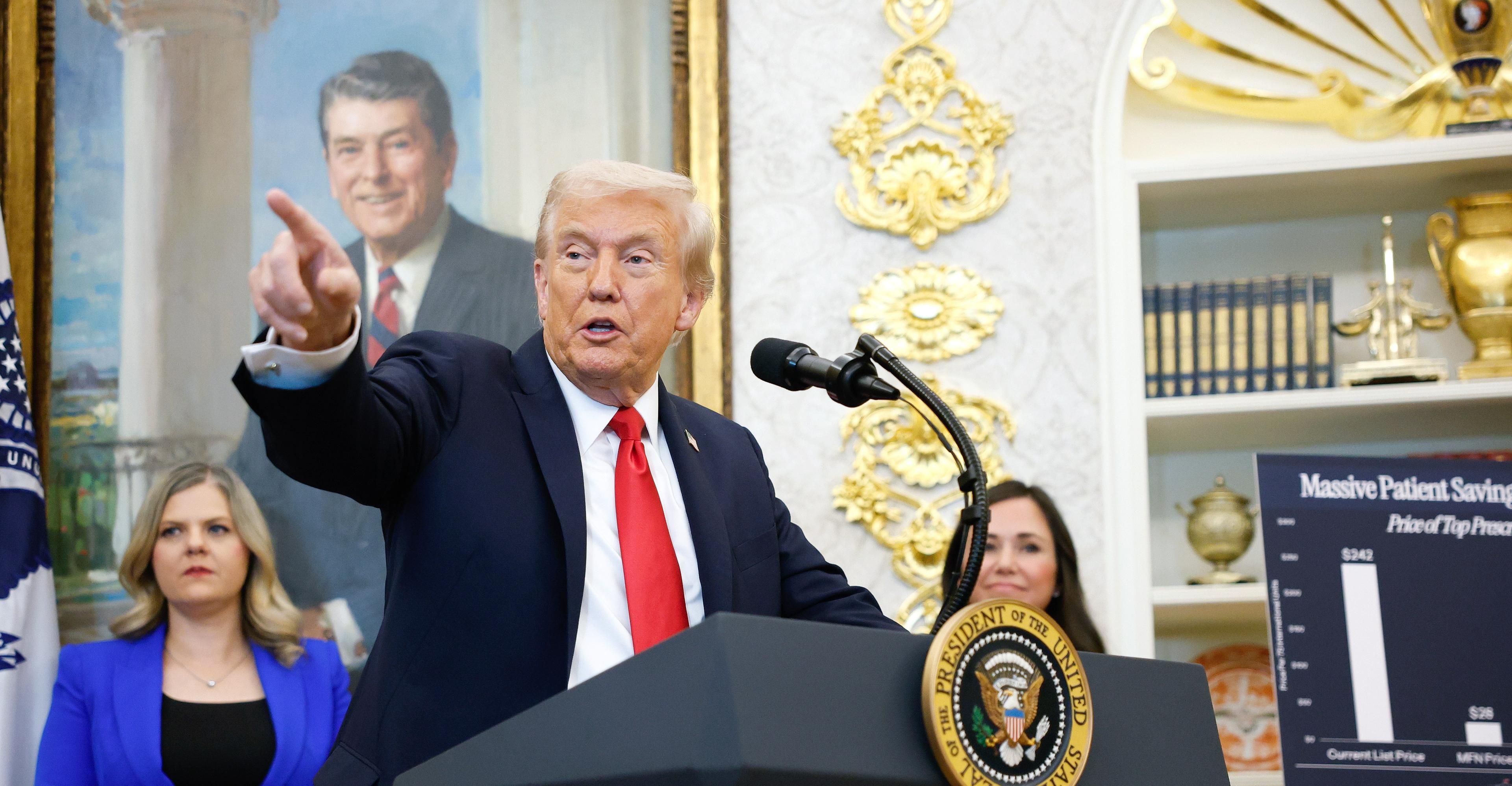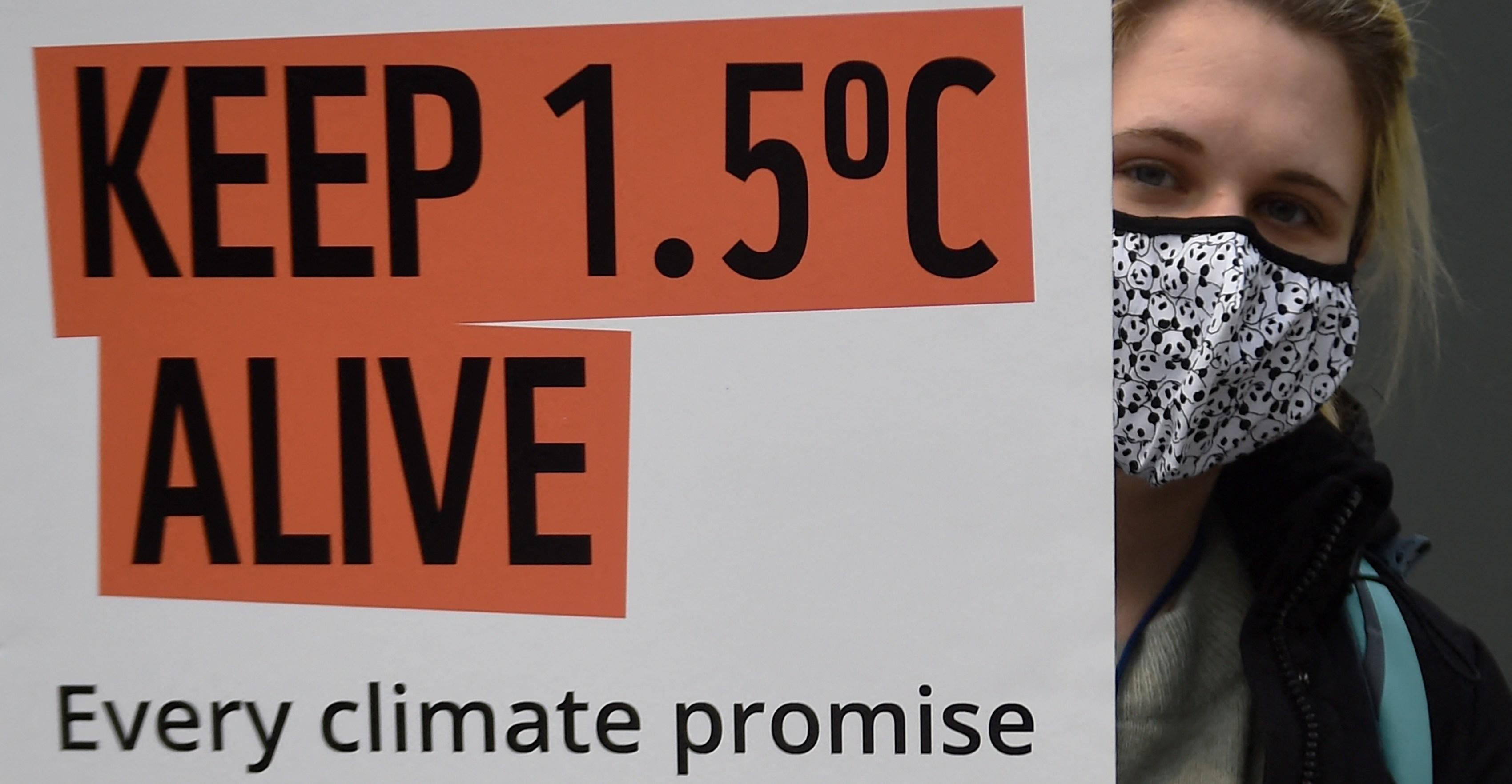Let’s not beat around the bush. It is more likely than not that Donald Trump will return to the White House next year. Right now, polling averages show Trump with a slight popular vote lead over incumbent President Joe Biden. And, even if Biden overcomes this…

Published 2 years ago on Jun 11th 2024, 12:00 pm
By Web Desk

Let’s not beat around the bush. It is more likely than not that Donald Trump will return to the White House next year. Right now, polling averages show Trump with a slight popular vote lead over incumbent President Joe Biden. And, even if Biden overcomes this small deficit, the Electoral College system effectively makes Trump votes count more than Biden votes. Although there may be signs that the Republican Party’s advantage in the Electoral College is fading, that advantage was substantial in the last two presidential elections. Democrat Hillary Clinton beat Trump in 2016 by more than two points in the popular vote, but still lost the Electoral College. Biden beat Trump by more than four points, but would have lost if a small number of votes had flipped to Trump in a handful of states. That means that, if Justices Sonia Sotomayor or Elena Kagan remain on the Supreme Court past this year, they risk allowing their seat to be filled by a convicted felon who tried to overthrow the duly elected government of the United States of America, inciting an insurrection at the United States Capitol in the process. The full picture for liberals on the Supreme Court is even grimmer. It is still possible that Biden will prevail this November — polls fairly consistently suggest that the most engaged voters prefer the incumbent — but Democrats need a miracle to keep their majority in the malapportioned United States Senate. Senate malapportionment is such a liability for Democrats that Republicans would not have controlled the Senate at all since the late 1990s if Senate seats were distributed fairly based on population. In the likely event that Democrats lose control of the Senate in November, they may not have a realistic shot at regaining the Senate again until 2030 or even later — and that’s assuming that population shifts do not place the Senate permanently in Republican Party hands. We already know that, if Republicans control the Senate, no Democrat is likely to be confirmed to the Supreme Court. Just ask Merrick Garland. That means that, unless Sotomayor (who turns 70 this month) and Kagan (who is 64) are certain that they will survive well into the 2030s, now is their last chance to leave their Supreme Court seats to someone who won’t spend their tenure on the bench tearing apart everything these two women tried to accomplish during their careers. The difference between a 6-3 Supreme Court and a 7-2 or 8-1 Supreme Court is enormous No matter how far the Supreme Court moves to the right, liberals will always win some high-profile victories before the justices. That’s because lawyers are smart, and when the Court lurches rightward, right-wing lawyers start bringing more and more aggressive cases to see what they can get away with until they eventually find the point where a majority of the justices balk. Earlier this term, for example, the Supreme Court reversed a decision by the right-wing United States Court of Appeals for the Fifth Circuit, which declared the entire Consumer Financial Protection Bureau unconstitutional. The Fifth Circuit’s decision rested on a completely made-up theory of the Constitution that even Justice Clarence Thomas deemed to be a bridge too far. It also threatened to so disrupt the US banking system that the Fifth Circuit’s approach could have triggered a second Great Depression. Yet, while this catastrophe was averted, the vote was not unanimous. Two justices – Samuel Alito and Neil Gorsuch – voted to roll the dice on an economic depression. So did seven judges on the Fifth Circuit. The point is that many Republican appointees to the federal bench embrace arguments that no rational person would endorse. And, with each seat Trump fills on the Supreme Court, the risk increases that the Court will do permanent damage to the United States, its economy, and its democracy. Even setting aside this risk, countless rights that millions of Americans take for granted will be on the chopping block if Sotomayor and Kagan are swapped out for, say, another Clarence Thomas. In a concurring opinion accompanying the Court’s decision in Dobbs v. Jackson Women’s Health Organization (2022), the case overruling Roe v. Wade, Thomas labeled several other famous precedents “demonstrably erroneous” – including decisions protecting the right to contraception, the right to same-sex marriage, and the right of consenting adults to engage in sexual activity. For the moment, at least, these rights are most likely safe; Justice Brett Kavanaugh published his own concurring opinion which explicitly disavowed Thomas’s plan to let the government control sex and sexuality. But while there are probably five votes on the current Supreme Court that oppose Thomas’s plan, it’s far from clear that there are any more than that. Justice Samuel Alito’s dissent in in Obergefell v. Hodges (2015), the marriage equality decision, so closely tracks the reasoning of his majority opinion in Dobbs that it’s hard to imagine that he would not vote to overrule Obergefell if given the chance. Justice Neil Gorsuch dissented from the Court’s decision in Pavan v. Smith (2017), which rejected an attempt to water down Obergefell’s holding that same-sex couples are entitled to marry “on the same terms and conditions as opposite-sex couples.” Justice Amy Coney Barrett signed a 2015 letter calling for “marriage and family founded on the indissoluble commitment of a man and a woman.” Thomas, in other words, could be one more Trump appointee to the Supreme Court away from turning his Dobbs concurrence into a majority opinion. One of the most significant Supreme Court developments under President Biden is that the Court’s Republicans have invented more and more baroque reasons to veto policy decisions that Congress entrusted to federal agencies within the Executive Branch — something that it emphatically did not do when Trump was in the White House. The policy merits of Biden’s student loan cancellation program are debatable, for example, but it was clearly and unambiguously authorized by an Act of Congress. The Republican justices made up a reason to strike it down anyway. Those same Republicans, moreover, now appear poised to overrule a seminal Reagan-era precedent limiting the judiciary’s power to determine federal policy. The Court, in other words, is effectively displacing the president — who is supposed to control agencies like the EPA or the Labor Department — and giving control over these Executive Branch agencies to itself. And so it now matters enormously who sits on the Supreme Court because the nine justices will not only have the final word on all policy matters that are legitimately set by the judiciary, but it also wields a veto power over every policy decision that Congress delegated to the Executive. There’s one other reason to be frightened of a 7-2 or 8-1 Republican Supreme Court: Bush v. Gore (2000) happened. The Supreme Court has the power to decide elections and to select the person who will appoint future justices. Last year, in Moore v. Harper (2023), the Supreme Court declared that it will now be the final word on how to interpret state election law — a power that has historically resided in state Supreme Courts. Though it claimed that it will only use this new, self-given power when state courts “exceed the bounds of ordinary judicial review,” the question of when a state court does so will be decided by the justices themselves. Which means that the only thing preventing this Court from overturning any state’s determination that a Democrat won a governorship, a congressional seat, or the state’s Electoral College votes is the justices’ own desire to restrain themselves. Republicans on the Supreme Court, moreover, have already dismantled much of the Voting Rights Act, the landmark law that bans race discrimination in elections and that ended Jim Crow disenfranchisement in the American South. Meanwhile, two Republican judges on the Eighth Circuit recently tried to repeal the Voting Rights Act almost in its entirety. The greatest danger from a 7-2 or 8-1 Supreme Court, in other words, isn’t just that the justices could make it impossible for Democrats to govern while in office, or that the Court could implement the Republican Party’s platform from the bench. The Court could permanently entrench Republican rule, eliminating legal safeguards protecting the right to vote, and even overturning elections when Democrats somehow manage to eke out a victory. Demanding that Democratic justices retire early comes with a price, but the alternative is far worse Shortly after the 2022 midterm elections, I published an essay much like this one, arguing that “Sotomayor and Kagan need to think about retiring.” In it, I acknowledged that Democrats will pay a price if their justices must shuffle off the Court whenever they can be replaced by younger versions of themselves, while Republican justices are free to serve for decades. One price is that appellate judges form bonds with their colleagues as they spend more time on the bench. Kagan speaks openly about cultivating a relationship with Chief Justice John Roberts, and there is significant evidence that she’s successfully persuaded Roberts to decide several important cases narrowly instead of handing down a sweeping conservative victory. Sotomayor sometimes teams up with Gorsuch, the most libertarian of the Court’s Republicans, in criminal justice cases. And there are some early signs that Sotomayor may be forming a productive bond with Barrett. There’s no guarantee that Sotomayor or Kagan’s replacement will be similarly successful in influencing their Republican peers, although that influence will obviously be lost as well if either justice is replaced by a Trump appointee. Long-serving justices can also develop cult followings that mature into legal revolutions. Justice Antonin Scalia once explained why he wrote punchy dissents laden with creative insults: “I’ve given up on the current generation — they’re gone, forget about them,” Scalia said in 2015. “But the kids in law school, I think there’s still a chance,” he added. “That’s who I write my dissents for.” Scalia understood that law students are taught the law by reading both the majority opinion and the dissent in important cases. So, if a justice writes an engaging and memorable dissent, they can shape many young lawyers’ views of the law before those lawyers are even sworn into the bar. No one has perfected this strategy more than Justice Thomas, who is known for his ambitious concurring opinions and dissents urging his Court to abandon judicial restraint and write far-right policy views into the Constitution. Among other things, Thomas embraced the same legal theory the Court once used to declare federal child labor laws unconstitutional. He successfully convinced his Republican colleagues to cast a skeptical eye on nearly all US gun laws. And he’s called upon his Court to overrule a landmark decision that is the source of press freedom in the United States. For now, at least, many of Thomas’s most reactionary opinions remain pipe dreams, but he’s successfully persuaded much of the Republican legal establishment to carry his banner. More than one in eight of Trump’s appointees to the federal appellate bench are former Thomas clerks. Swapping out Sotomayor or Kagan means that they are less likely to have similar influence on the next generation of lawyers and judges. Though, again, neither justice’s ideas are likely to have much impact on the future of US law if the Court is dominated by people like Thomas. A third reason why replacing experienced justices with younger blood comes at a cost: The Court is supposed to decide a wide range of technocratic cases involving complicated areas of the law such as immigration, bankruptcy, or the rules governing workplace retirement benefits. A new justice will have to learn at least some of these subject matters on the job, while a more experienced incumbent will be more knowledgeable and therefore less likely to make mistakes. While this concern is real, it is less of a concern than it has been in the past. The Court is hearing fewer cases today than it has at any point since the mid-19th century, and the Court’s diminished docket appears to have come entirely at the expense of the more technocratic cases. [Image: https://platform.vox.com/wp-content/uploads/sites/2/2024/06/temp_c7e10f.png?quality=90&strip=all] The justices, in other words, are still hearing a full slate of the sort of political cases where their decisions are most likely to be influenced by whether they are Democrats or Republicans, and fewer and fewer of the sort of cases where experience matters most. Finally, some lawmakers have expressed concerns that Sotomayor’s retirement would make the Supreme Court less representative, as she is the first and only Latina to serve as a justice. But there’s also no reason to think she needs to be the last. There are any number of qualified candidates of Latin American descent who could potentially replace Sotomayor. According to the Federal Judicial Center, Biden has appointed seven Hispanic judges to the federal courts of appeals, including Judge Myrna Pérez, a former voting rights lawyer who is two decades younger than Sotomayor. So, while there are good reasons to regret a world where veteran Democratic justices like Sotomayor and Kagan must hang up their robes much earlier than their Republican colleagues, there’s no getting around what the Supreme Court has become. It is a partisan institution, increasingly focused on political matters and increasingly eager to claim more and more power to shape national policy. And that means that it is now an institution just like Congress or the presidency. The question of which party controls the Supreme Court matters so much more than the question of which Democrats serve on the Supreme Court that Democratic justices have a moral imperative to retire during those exceedingly rare periods when it’s actually possible to confirm another Democrat as their replacement.
Harrison Ford to get lifetime acting award
- 7 گھنٹے قبل
UN experts raise objections on India's unilateral actions of May 7 inside Pakistan
- 13 گھنٹے قبل
More than 42mn children administered polio vaccination during final polio drive in Pakistan
- 11 گھنٹے قبل
Gunman in Brown University shooting found dead, linked to MIT killing
- 12 گھنٹے قبل
PMD to install Advanced Automatic Weather Stations
- 11 گھنٹے قبل

Gold prices plunge in Pakistan, global markets
- 13 گھنٹے قبل
Soccer legend Ronald debuts in Hollywood, to play key role in upcoming movie
- 12 گھنٹے قبل
PM Shehbaz performs groundbreaking of Centre of Excellence for Autism
- 13 گھنٹے قبل
Water aggression against Pakistan: India curtails Jhelum flows after Chenab
- 7 گھنٹے قبل

The mass shooting on Australia’s Bondi Beach, briefly explained
- 21 گھنٹے قبل
Morocco beat Jordan 3-2 after extra time to clinch Arab Cup
- 13 گھنٹے قبل
ATC acquits SM Qureshi, awards 10-year sentences each to Dr Yasmeen, Ejaz Chaudhry in May 9 case
- 12 گھنٹے قبل
You May Like
Trending












